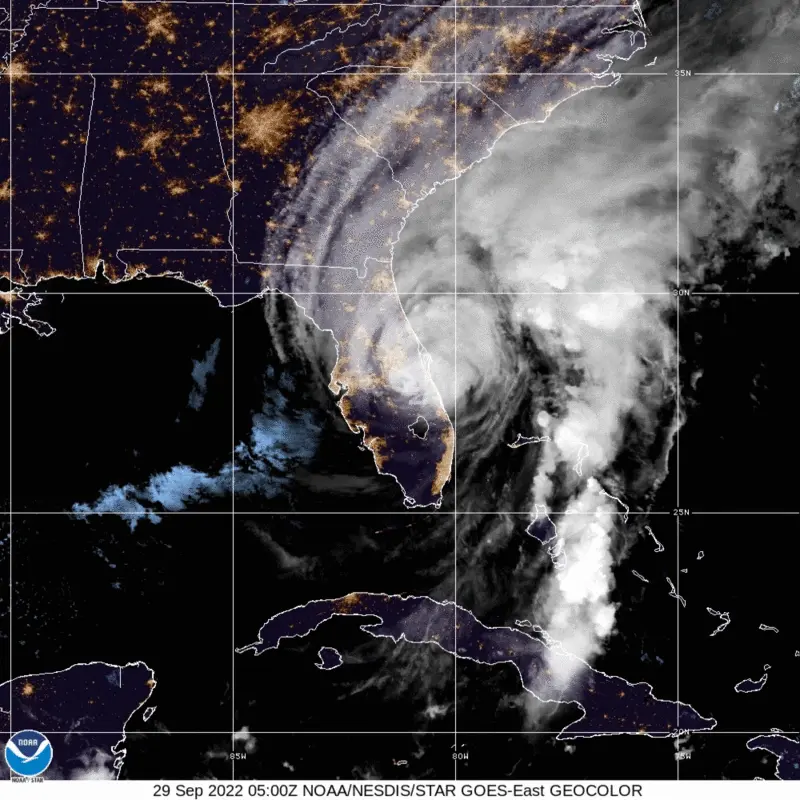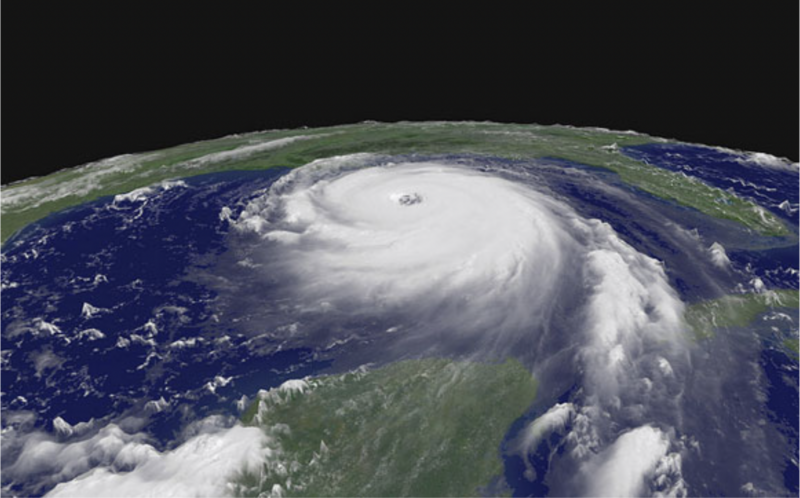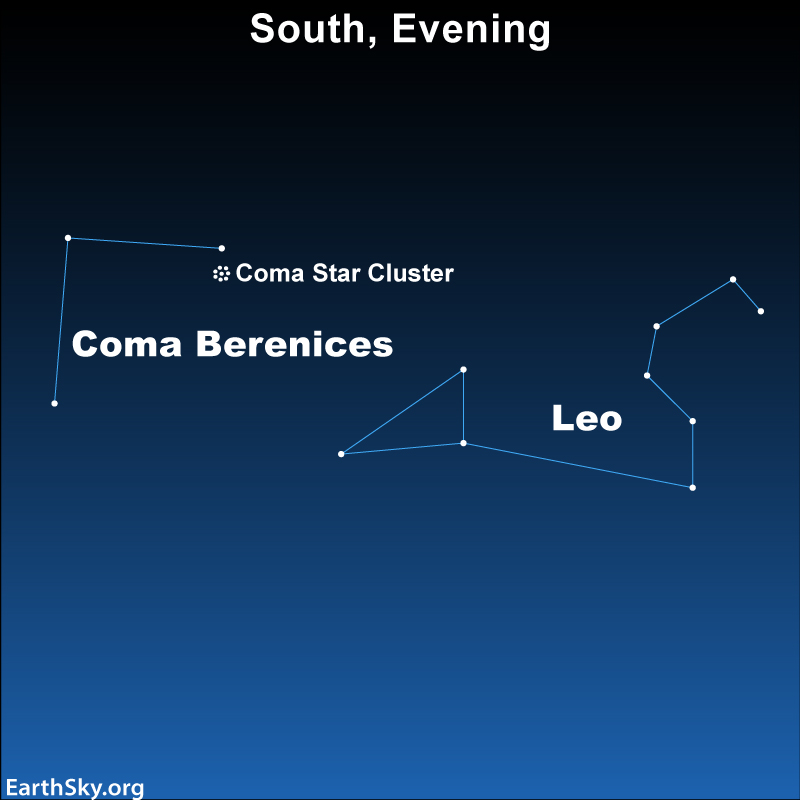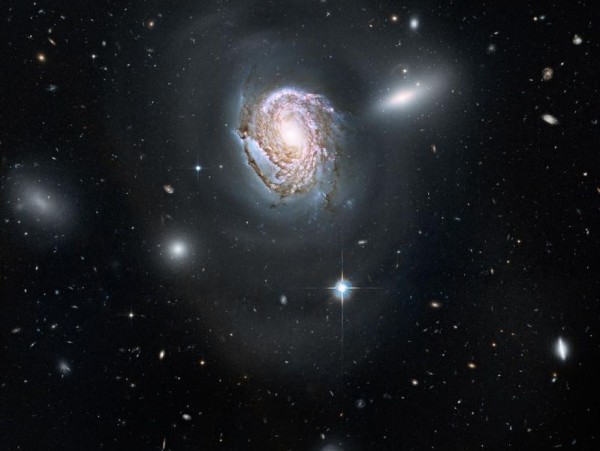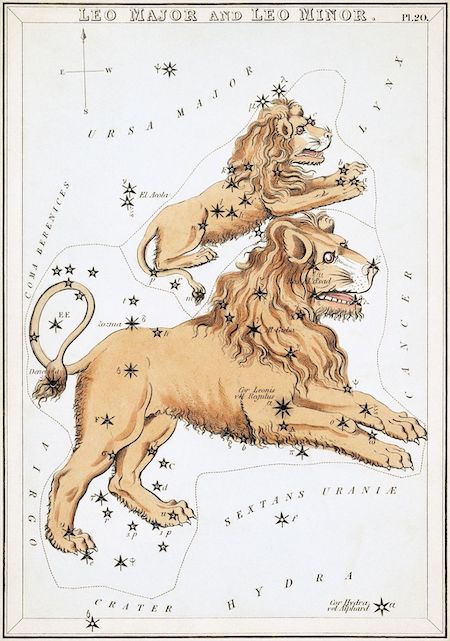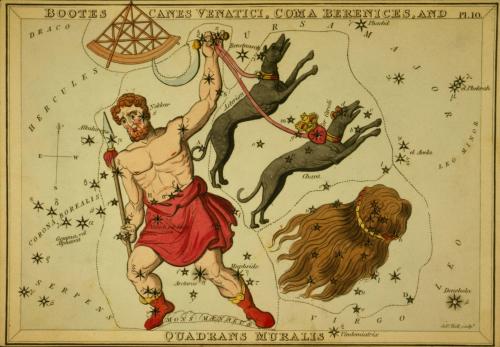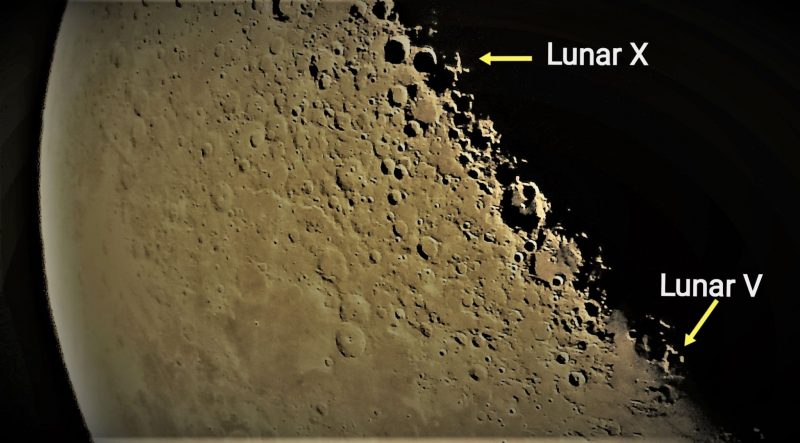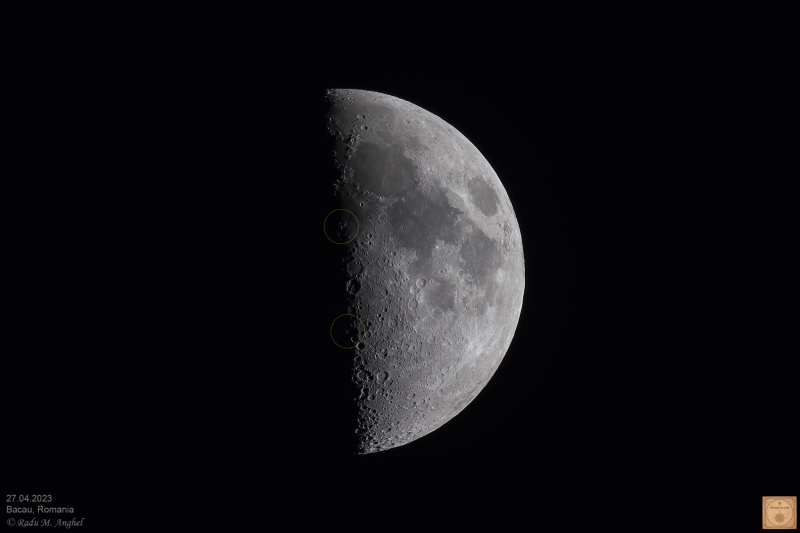
Hurricane forecast for the Atlantic in 2025
Colorado State University has been predicting tropical activity for the Atlantic hurricane season for 42 years. On Thursday, April 3, 2025, they released their 42nd pre-season hurricane forecast, and it calls for above average-average activity in the tropical Atlantic for the 2025 hurricane season. CSU is forecasting:
17 named storms
9 hurricanes
4 major hurricanes
This is above the 30-year-average (1991-2020) of:
14 named storms
7 hurricanes
3 major hurricanes
The 2024 Atlantic hurricane season saw 18 named storms, 11 hurricanes and five major hurricanes (Category 3 or higher).
Reasoning behind the hurricane forecast
Researchers at Colorado State University base their forecast on 40 years of past data as well as what they call analogs. Analogs are a forecast solution that predicts future weather patterns by identifying past weather situations that closely resemble current conditions. In addition to these analogs, CSU also used up to 40 years of model data from four different meteorological agencies from all over the world. The researchers say all these data are pointing toward a more-active-than-normal hurricane season. There are a few specific areas that CSU focused on for their forecast: ENSO phases and water temperature.
El Niño Southern Oscillation
El Niño Southern Oscillation, also called ENSO, is a global climate pattern that influences weather around the world, including tropical weather. The current ENSO phase is the cool phase, La Niña, during which the waters in the tropical Pacific Ocean are cooler than average.
La Niña can influence tropical development in the Atlantic, however. La Niña doesn’t allow for the development of strong wind shear (a change in wind direction and/or speed with height) over the Atlantic. Wind shear tears apart or weakens hurricanes, so less wind shear during La Niña won’t as easily hinder the development of tropical storms and hurricanes.

But La Niña should not continue into the summer. Forecasters predict a switch to ENSO neutral (not fully La Niña or El Niño) during the month of April. And they predict a 62% chance of neutral conditions lasting through August. They do not expect a complete switch to El Niño.
To put it simply, you can think of El Niño as the opposite of La Niña, as it is the warm phase of ENSO. El Niño would create more wind shear over the tropical Atlantic and make it more difficult for tropical systems to develop. But remember: the forecast is for a switch to a neutral phase, not fully El Niño. Due to uncertainty as to what ENSO phase will truly persist through hurricane season, including the possibility of a lingering La Niña, CSU researchers believe this will still have an impact on tropical cyclone development.
Water temperatures
Tropical cyclones, by definition, form over and get their fuel from warm ocean water of at least 80 degrees Fahrenheit (27 Celsius). Water temperatures over the tropical Atlantic are already warmer than average, with the exception of in the far eastern Atlantic where water temperatures are slightly cooler than average. Where water temperatures are currently cooler than average, strong trades have mixed more of the water, making it cooler.
However, within the coming weeks, those trades winds are expected to be weaker, allowing the area with cooler water to gradually warm up and keep the rest of the waters across the Atlantic warmer than average.
Warmer-than-average water temperatures paired with La Niña or even neutral conditions have the potential to create an environment where tropical systems could develop without much inhibition.
Retired names and 2025 Atlantic Basin names
The 2024 Atlantic hurricane season was an active one as well. It had 18 named storms, 11 hurricanes and five major hurricanes. Three of the storms caused so much devastation that their names will never be used again. The names Beryl, Helene and Milton are retired for the Atlantic Basin and will be replaced by Brianna, Holly and Miguel. (Tropical cyclone names are reused every six years, so the next time the 2024 list of names will come up again will be 2030).
The names for the 2025 season are:
Andrea Barry Chantal
Dexter Erin Fernand
Gabrielle Humberto Imelda
Jerry Karen Lorenzo
Melissa Nestor Olga
Pablo Rebekah Sebastien
Tanya Van Wendy
Read more about 2025’s hurricane names here.
Hurricane preparedness
Hurricane season in the Atlantic basin begins June 1 and runs through November 30 every year. But the time to be prepared for impacts from a tropical cyclone is before hurricane season begins. You should know your risks from a tropical storm or hurricane: is your biggest threat water or wind? Are you in an evacuation zone, and where should you go when called to evacuate? You should also prepare a hurricane kit full of medicine, fresh water, non-perishable food (and a can opener!) for every person and every pet in your household, plus a radio, chargers and cash. Find more hurricane preparedness tips at NOAA.

Bottom Line: Researchers with Colorado State University are calling for another more-active-than-normal hurricane season with 17 total named storms, nine hurricanes and four major hurricanes.
Stay up to date with all tropical forecasts at NOAA’s National Hurricane Center
The post Above-average hurricane forecast for the Atlantic in 2025 first appeared on EarthSky.
from EarthSky https://ift.tt/1TjFDOW

Hurricane forecast for the Atlantic in 2025
Colorado State University has been predicting tropical activity for the Atlantic hurricane season for 42 years. On Thursday, April 3, 2025, they released their 42nd pre-season hurricane forecast, and it calls for above average-average activity in the tropical Atlantic for the 2025 hurricane season. CSU is forecasting:
17 named storms
9 hurricanes
4 major hurricanes
This is above the 30-year-average (1991-2020) of:
14 named storms
7 hurricanes
3 major hurricanes
The 2024 Atlantic hurricane season saw 18 named storms, 11 hurricanes and five major hurricanes (Category 3 or higher).
Reasoning behind the hurricane forecast
Researchers at Colorado State University base their forecast on 40 years of past data as well as what they call analogs. Analogs are a forecast solution that predicts future weather patterns by identifying past weather situations that closely resemble current conditions. In addition to these analogs, CSU also used up to 40 years of model data from four different meteorological agencies from all over the world. The researchers say all these data are pointing toward a more-active-than-normal hurricane season. There are a few specific areas that CSU focused on for their forecast: ENSO phases and water temperature.
El Niño Southern Oscillation
El Niño Southern Oscillation, also called ENSO, is a global climate pattern that influences weather around the world, including tropical weather. The current ENSO phase is the cool phase, La Niña, during which the waters in the tropical Pacific Ocean are cooler than average.
La Niña can influence tropical development in the Atlantic, however. La Niña doesn’t allow for the development of strong wind shear (a change in wind direction and/or speed with height) over the Atlantic. Wind shear tears apart or weakens hurricanes, so less wind shear during La Niña won’t as easily hinder the development of tropical storms and hurricanes.

But La Niña should not continue into the summer. Forecasters predict a switch to ENSO neutral (not fully La Niña or El Niño) during the month of April. And they predict a 62% chance of neutral conditions lasting through August. They do not expect a complete switch to El Niño.
To put it simply, you can think of El Niño as the opposite of La Niña, as it is the warm phase of ENSO. El Niño would create more wind shear over the tropical Atlantic and make it more difficult for tropical systems to develop. But remember: the forecast is for a switch to a neutral phase, not fully El Niño. Due to uncertainty as to what ENSO phase will truly persist through hurricane season, including the possibility of a lingering La Niña, CSU researchers believe this will still have an impact on tropical cyclone development.
Water temperatures
Tropical cyclones, by definition, form over and get their fuel from warm ocean water of at least 80 degrees Fahrenheit (27 Celsius). Water temperatures over the tropical Atlantic are already warmer than average, with the exception of in the far eastern Atlantic where water temperatures are slightly cooler than average. Where water temperatures are currently cooler than average, strong trades have mixed more of the water, making it cooler.
However, within the coming weeks, those trades winds are expected to be weaker, allowing the area with cooler water to gradually warm up and keep the rest of the waters across the Atlantic warmer than average.
Warmer-than-average water temperatures paired with La Niña or even neutral conditions have the potential to create an environment where tropical systems could develop without much inhibition.
Retired names and 2025 Atlantic Basin names
The 2024 Atlantic hurricane season was an active one as well. It had 18 named storms, 11 hurricanes and five major hurricanes. Three of the storms caused so much devastation that their names will never be used again. The names Beryl, Helene and Milton are retired for the Atlantic Basin and will be replaced by Brianna, Holly and Miguel. (Tropical cyclone names are reused every six years, so the next time the 2024 list of names will come up again will be 2030).
The names for the 2025 season are:
Andrea Barry Chantal
Dexter Erin Fernand
Gabrielle Humberto Imelda
Jerry Karen Lorenzo
Melissa Nestor Olga
Pablo Rebekah Sebastien
Tanya Van Wendy
Read more about 2025’s hurricane names here.
Hurricane preparedness
Hurricane season in the Atlantic basin begins June 1 and runs through November 30 every year. But the time to be prepared for impacts from a tropical cyclone is before hurricane season begins. You should know your risks from a tropical storm or hurricane: is your biggest threat water or wind? Are you in an evacuation zone, and where should you go when called to evacuate? You should also prepare a hurricane kit full of medicine, fresh water, non-perishable food (and a can opener!) for every person and every pet in your household, plus a radio, chargers and cash. Find more hurricane preparedness tips at NOAA.

Bottom Line: Researchers with Colorado State University are calling for another more-active-than-normal hurricane season with 17 total named storms, nine hurricanes and four major hurricanes.
Stay up to date with all tropical forecasts at NOAA’s National Hurricane Center
The post Above-average hurricane forecast for the Atlantic in 2025 first appeared on EarthSky.
from EarthSky https://ift.tt/1TjFDOW


